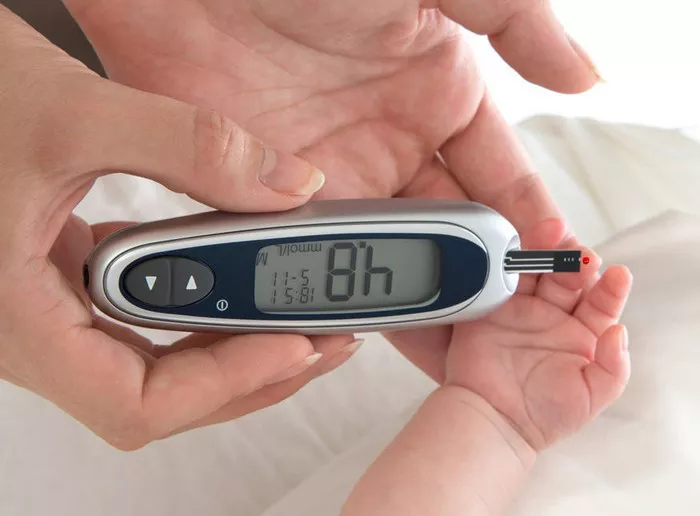Insulin, a vital hormone produced by the pancreas, plays a pivotal role in regulating blood sugar levels in the body. For individuals with diabetes, managing insulin levels is crucial for maintaining health and preventing complications. With advancements in medical science, various types of insulin have been developed to cater to the diverse needs of patients. Understanding these different types is essential for effective diabetes management. In this article, we delve into the five main categories of insulin, their properties, administration methods, and usage scenarios.
Rapid-Acting Insulin
Rapid-acting insulin is designed to mimic the body’s natural insulin response after meals. It has a quick onset of action, typically within 15 minutes, making it ideal for controlling postprandial glucose levels. This type of insulin peaks within 30 minutes to 3 hours and has a duration of 3 to 5 hours.
Examples of rapid-acting insulin include insulin lispro (brand name Humalog), insulin aspart (brand name NovoLog), and insulin glulisine (brand name Apidra). These insulins are usually administered through subcutaneous injection, either immediately before or shortly after meals.
Rapid-acting insulin is often used in combination with longer-acting insulin or basal insulin to provide comprehensive glycemic control throughout the day. It allows for flexibility in meal timing and composition, enabling individuals to adjust their insulin doses according to their carbohydrate intake and activity levels.
Short-Acting (Regular) Insulin
Short-acting insulin, also known as regular insulin, has a slightly slower onset of action compared to rapid-acting insulin. It typically starts working within 30 minutes to an hour after injection, peaks within 2 to 4 hours, and lasts for about 6 to 8 hours.
Regular insulin is commonly used to manage blood sugar levels between meals and overnight. It helps prevent hyperglycemia during fasting periods and provides a basal level of insulin activity throughout the day.
The most well-known brand of short-acting insulin is regular human insulin (RHI), which includes products such as Humulin R and Novolin R. These insulins are available in vials or insulin pens for subcutaneous injection. Additionally, regular insulin can be administered intravenously in clinical settings for rapid glucose control.
Short-acting insulin is often prescribed in combination with longer-acting insulins or as part of a sliding scale insulin regimen for managing blood sugar fluctuations in people with diabetes.
Intermediate-Acting Insulin
Intermediate-acting insulin has a slower onset and longer duration of action compared to rapid-acting and short-acting insulins. It begins working within 1 to 2 hours after injection, peaks in 4 to 12 hours, and can last for up to 18 hours.
NPH (Neutral Protamine Hagedorn) insulin is the most common type of intermediate-acting insulin. It is known for its cloudy appearance due to the addition of protamine, which delays its absorption into the bloodstream. NPH insulin provides a sustained release of insulin throughout the day, making it suitable for covering basal insulin needs.
NPH insulin is typically administered twice daily to maintain stable blood sugar levels between meals and overnight. It can be used alone or in combination with rapid-acting or short-acting insulins to achieve optimal glycemic control.
Examples of NPH insulin formulations include Humulin N and Novolin N. These insulins are available in vials for injection using syringes or in pre-filled pens for convenience.
Long-Acting Insulin
Long-acting insulin, also known as basal insulin, is designed to provide a steady level of insulin activity over an extended period, usually 24 hours. Unlike rapid-acting or short-acting insulins, long-acting insulins do not have a pronounced peak. Instead, they maintain a consistent level of insulin in the bloodstream, helping to control fasting blood sugar levels.
The main advantage of long-acting insulin is its ability to provide basal insulin coverage throughout the day, mimicking the body’s natural insulin secretion. This helps prevent both hyperglycemia and hypoglycemia by providing a stable foundation for blood sugar control.
Two common types of long-acting insulin analogs include insulin glargine and insulin detemir. Insulin glargine (brand names Lantus, Basaglar, and Toujeo) has a duration of action of up to 24 hours and is usually administered once daily. Insulin detemir (brand name Levemir) has a duration of action of up to 24 hours as well but may require twice-daily dosing in some individuals.
Long-acting insulins are available in vials for injection with syringes or in pre-filled pens for ease of use. They are often prescribed in combination with rapid-acting or short-acting insulins to provide comprehensive glycemic control throughout the day.
Ultra-Long-Acting Insulin
Ultra-long-acting insulin is the latest advancement in insulin therapy, offering an even more prolonged duration of action compared to traditional long-acting insulins. These insulins are designed to provide basal insulin coverage for up to 36 hours or longer, reducing the need for multiple daily injections.
One notable ultra-long-acting insulin analog is insulin degludec (brand name Tresiba). Insulin degludec forms soluble multi-hexamers upon injection, resulting in a slow and continuous release of insulin into the bloodstream. This provides a consistent level of basal insulin activity, with a duration of action lasting beyond 24 hours.
The extended duration of ultra-long-acting insulin offers greater flexibility in dosing schedules, allowing for once-daily or even less frequent injections. This can lead to improved adherence to insulin therapy and better glycemic control for individuals with diabetes.
Ultra-long-acting insulins are available in pre-filled pens for subcutaneous injection. They can be used alone or in combination with rapid-acting insulins to address both basal and prandial insulin needs throughout the day.
Conclusion
The development of various types of insulin has revolutionized diabetes management, providing individuals with greater flexibility, convenience, and efficacy in controlling blood sugar levels. Understanding the characteristics and usage scenarios of each type of insulin is essential for healthcare professionals and patients alike. By tailoring insulin therapy to individual needs and preferences, optimal glycemic control can be achieved, leading to better health outcomes and improved quality of life for people living with diabetes.


























